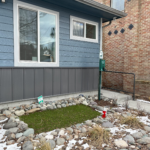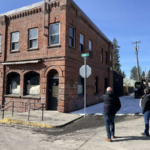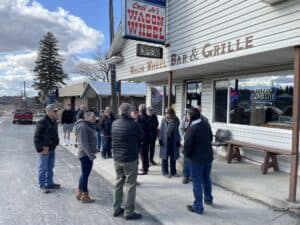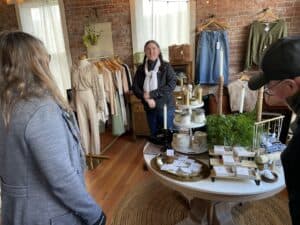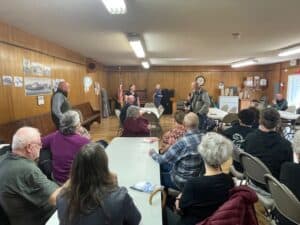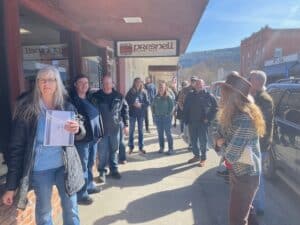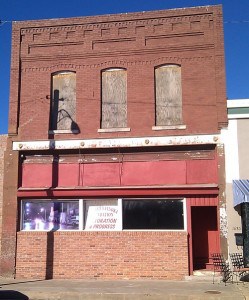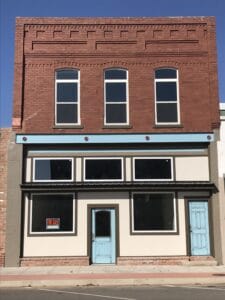Monthly Archives: April 2024
Pet friendly business opportunities
Any business can offer pet friendly amenities In 2023, SaveYour.Town identified pet friendly communities as a Top Topic. Here’s an example of a business offering a pet friendly amenity. In Palouse, Washington, a local veterinarian has an office in the downtown. Out front, they’ve installed a small patch of artificial turf as a pet relief […]
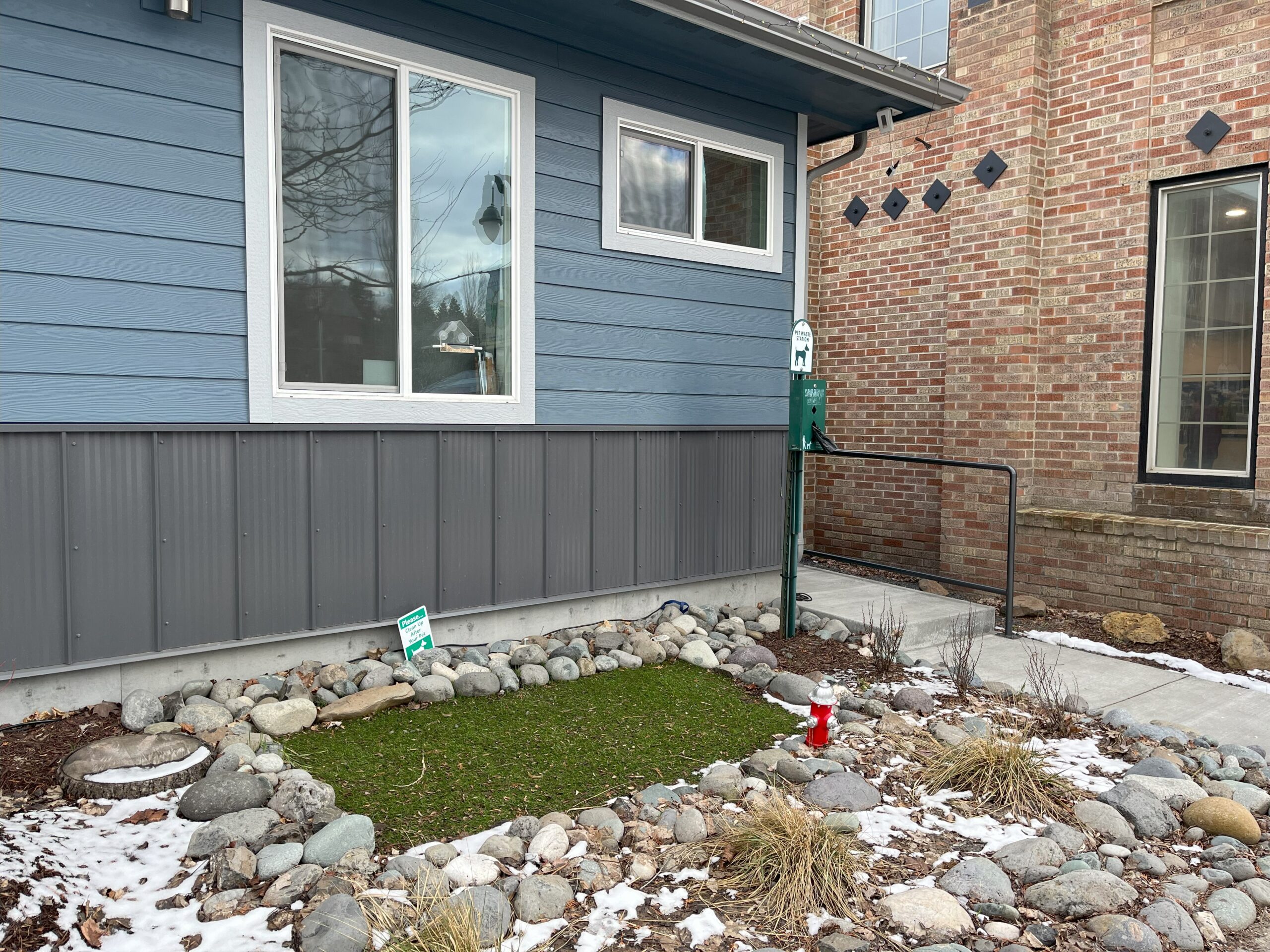
Here’s a pet friendly business in Palouse, Washington, with a pet relief station. Photo by Becky McCray.
Any business can offer pet friendly amenities
In 2023, SaveYour.Town identified pet friendly communities as a Top Topic.
Here’s an example of a business offering a pet friendly amenity. In Palouse, Washington, a local veterinarian has an office in the downtown. Out front, they’ve installed a small patch of artificial turf as a pet relief station. They added a cleanup bag dispenser on a pole and a tiny fire hydrant. It’s not a huge expense, but it adds a big benefit to anyone walking a dog downtown.
Pet friendly benefits
Any business in any small town can take advantage of the pet-friendly trend. Adding pet friendly amenities could attract more customers and clients. It also helps build a stronger sense of community. Pet-loving employees will also love adding pet-friendly features.
Even in tiny towns
We’ve noticed a boom in pet grooming businesses, even in small towns like Stratton, Colorado, population 600.
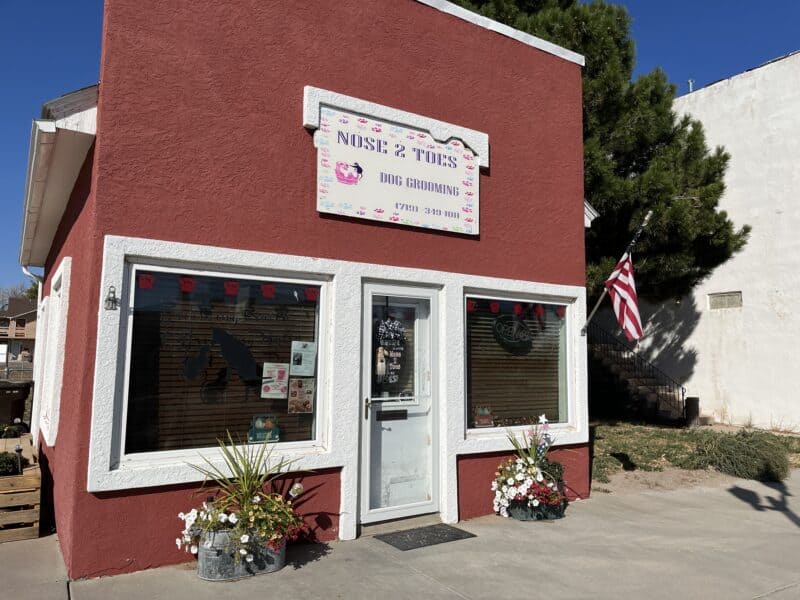
Nose 2 Toes Dog Grooming in Stratton, Colorado, draws customers in with a well maintained building facade, flowers out front and a flag display. Photo by Becky McCray.
Seasonal businesses: post signs year-round
Marketing tip: keep signs up year-round even if you’re a seasonal business. When I toured several small towns in Washington and Idaho with the Inland Northwest Partners, I noticed many part-time and seasonal businesses did not have signs up during their off season. In the town of Deary, Idaho, (population 500) there is a wine […]
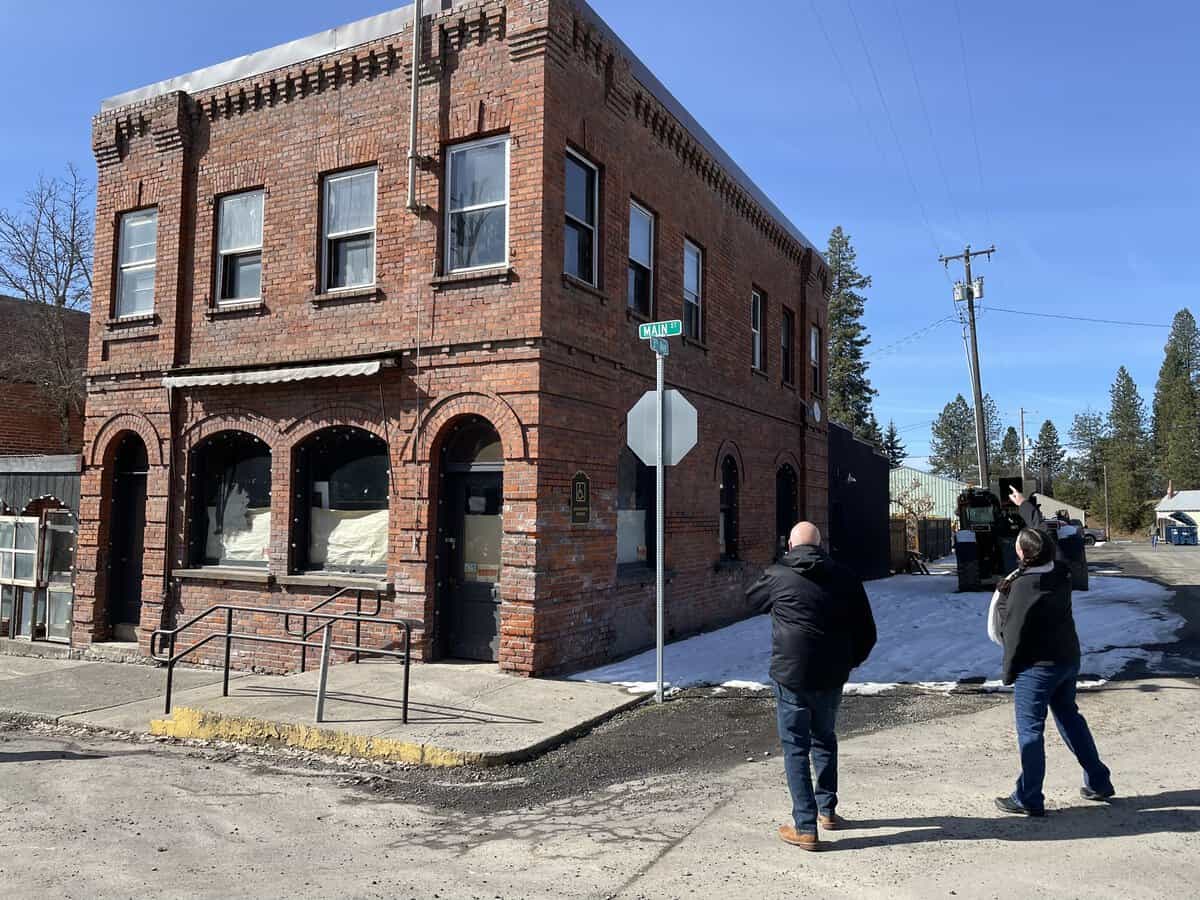
This building looks like it is in good repair, but there’s no way to tell by looking that it’s an active seasonal business. Photo by Ana Blaisdell.
Marketing tip: keep signs up year-round even if you’re a seasonal business.
When I toured several small towns in Washington and Idaho with the Inland Northwest Partners, I noticed many part-time and seasonal businesses did not have signs up during their off season.
In the town of Deary, Idaho, (population 500) there is a wine tasting parlor in a well-kept brick building on a corner in the downtown. Unfortunately there are no signs to indicate that the building is in use as a business during the tourist season. All during the winter it looks like just another empty building with blank paper covering the windows. By the time I toured in March, the paper was water stained and looked unattractive at best.
This contributes to a look of having an empty downtown or being less occupied than it really is. The way your downtown looks affects how people think of your downtown. Looking bad hurts the entire community’s development, which in turn hurts the wine tasting business.
It would be quite easy to create signage that indicates what months during the year the business is open and when it is not, much like operating hours.
I suggested a number of options for the wine tasting room. The owners could paint decorations on the windows, hang a permanent sign on the building, put posters or artwork inside the building to show through the windows, or use perforated decals with the marketing message and keep people from looking through the windows while still admitting light to the interior.
This tip applies to seasonal service businesses just as much as retail businesses. Whether your business is seasonal tourism equipment rentals or tax-season accounting, keep signs up year-round so you don’t look abandoned.
Every business in a small town wants to be part of a thriving local economy. Posting signs year-round on your part-time seasonal business is one way to contribute to that thriving locally economy.
Does your town need a boost of enthusiasm and fresh ideas?
Learn more about my working visits to small towns here.
Learn more about my working visits to small towns here.
These small town neighbors bought vacant buildings, brought them up to code. Here’s what happened next
Waynoka, Oklahoma, had a lot of vacant run-down buildings in their downtown. In a town of 900 people, the prospects didn’t look great. At an all-class reunion, a group of alumni got together and decided to change that. They called themselves Project Waynoka, our friend and early contributor Jeanne Cole said. They started raising money. […]
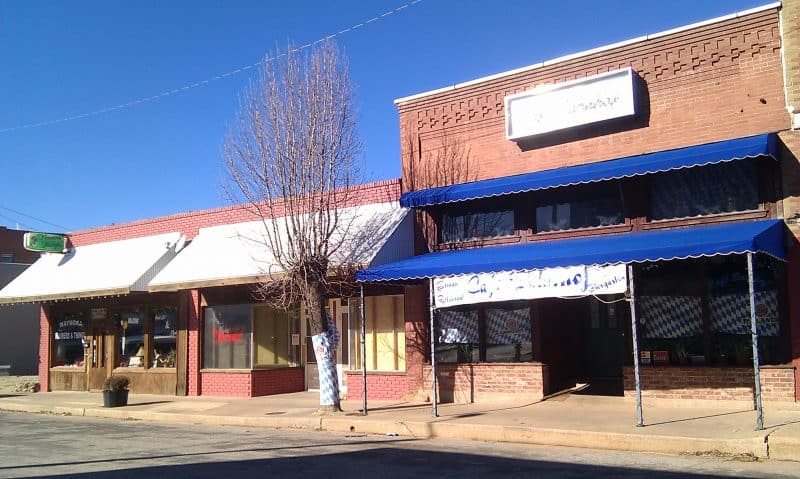
What can small towns do about crumbling buildings in their downtown? They can join together to fix them up and get businesses in them. Our own Jeanne Cole helped to bring this building back in downtown Waynoka. Photo by Becky McCray.
Waynoka, Oklahoma, had a lot of vacant run-down buildings in their downtown. In a town of 900 people, the prospects didn’t look great. At an all-class reunion, a group of alumni got together and decided to change that.
They called themselves Project Waynoka, our friend and early contributor Jeanne Cole said. They started raising money. They bought one building. They raised more money with community events. They scrounged for materials. They rallied volunteer labor. They brought this one building up to code, then sold it.
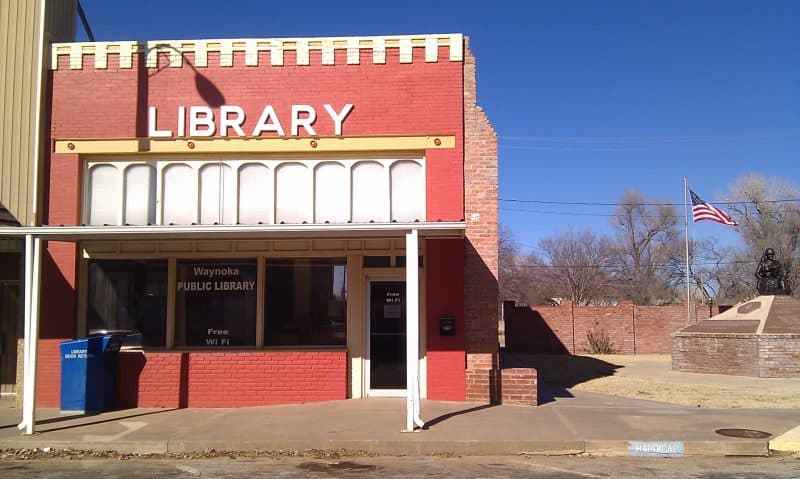
The public library in Waynoka is housed in a building that Project Waynoka rehabilitated. Next door is a vacant lot that the library uses for event space and that features a veterans memorial. Photo by Becky McCray.
With that money, they bought another building. More work, more fundraising, even more work, and there’s another building brought back into productive use.
They just kept saving buildings. Buildings that now house locally-owned businesses. The public library. The popular German restaurant.
A few buildings turned out to be in such bad shape that demolition was the best choice. So they took them down and then cleaned up the empty lots.
After decades of working on the project, the volunteer momentum had run down a bit. One key source of low cost labor was no longer available. But they didn’t quit entirely, they just slowed down.
They took on a big challenge with the old American Legion building. It needed a lot of work. They started with cosmetic improvements to the exterior.
It’s a model that any town can borrow: a small group of people rallying the community to save downtown buildings.
A group of Minneapolis neighbors who did a similar thing, with the added bonus of building cooperatives and nurturing local businesses as part of their project. Read more about it here: These Neighbors Got Together to Buy Vacant Buildings. Now They’re Renting to Bakers and Brewers
Chris Miller, of Adrian, Michigan (pop 21k), told me by email that a group of 22 local investors had pooled resources and bought a downtown building. You can read about it in this report: https://mml.org/placemaking/wp-content/uploads/sites/2/2013/12/casestudy-main-street-adrian.pdf
So that’s one by a private foundation, one by cooperative, and one by LLC.
Beyond the Big Banks: How rural small businesses can Move Their Money locally
The “Move Your Money” campaign wants you to shift your financial resources to local banks and investment opportunities. That makes a lot of sense for small town businesses who care about having a thriving local economy. The 2024 Move Your Money Campaign The American Independent Business Alliance (AMIBA) has been at the forefront of the […]
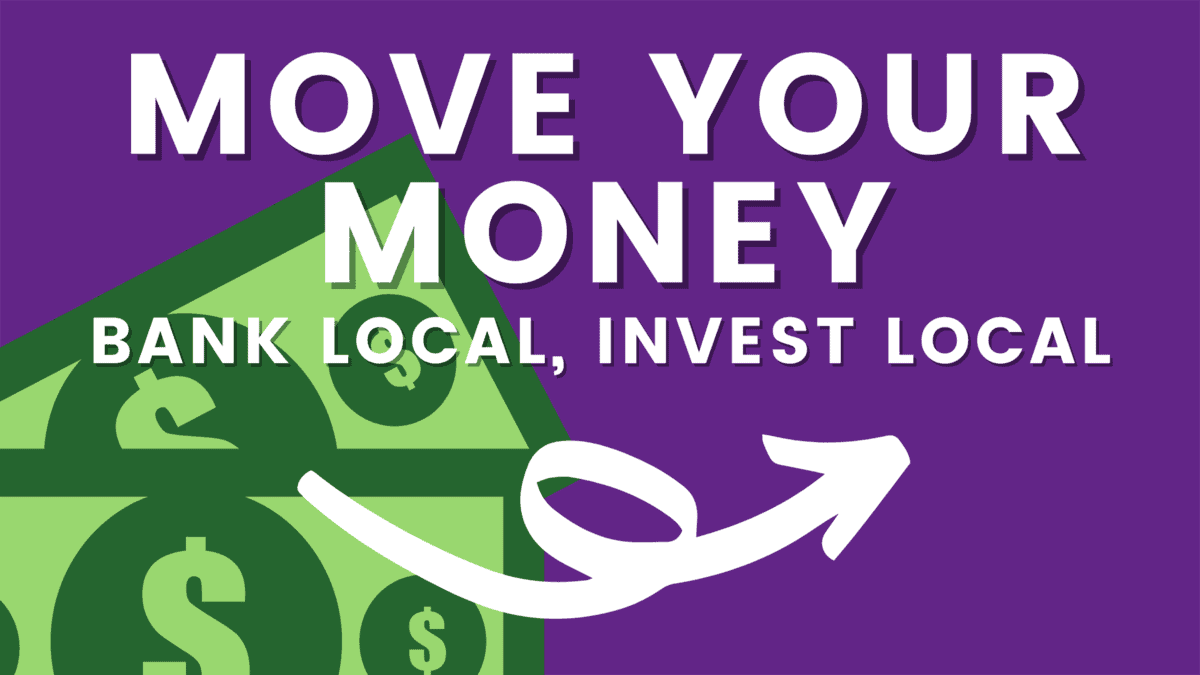
The “Move Your Money” campaign wants you to shift your financial resources to local banks and investment opportunities. That makes a lot of sense for small town businesses who care about having a thriving local economy.
The 2024 Move Your Money Campaign
The American Independent Business Alliance (AMIBA) has been at the forefront of the “Move Your Money” campaign, offering resources and support for those interested in making the switch to local banking. This year, AMIBA has emphasized the critical role that local banks and credit unions play in fostering economic resilience within small towns and rural communities. By banking locally, businesses and individuals not only enjoy more personalized service but also contribute to a financial ecosystem that directly benefits their immediate environment.
Key Points for Rural Small Businesses
For rural small businesses, the decision to bank locally can have far-reaching implications. Here are some practical benefits from moving your money:
- Strengthening Local Economies: Every dollar deposited in a local bank or invested in a local business circulates within the community, amplifying its economic impact. This circulation helps to create jobs, fund local projects, and support the growth of other small businesses.
- Access to Tailored Financial Services: Local banks often have a deeper understanding of the unique challenges and opportunities faced by rural businesses. This insight allows them to offer more tailored financial products and advice, which can be crucial for businesses looking to navigate the complexities of rural economies.
- Building Community Connections: Banking locally facilitates relationships that go beyond mere transactions. It fosters a sense of community and mutual support, where businesses and banks work together towards common goals.
- Advocacy and Support: AMIBA and other organizations provide a wealth of resources for businesses interested in moving their money. From virtual screenings that explore cooperative economies to discussions on local investing, these platforms offer valuable insights and networking opportunities.
How local is your bank?
As rural and small town banks merge and change, it can be tough to tell if your once-local bank really is still local. With regulations pushing small town banks to buy other small banks, your bank now might be semi-local or owned somewhere else. But does that make them a bad neighbor?
Even regionally owned banks are better for your community than giant national or international banks. Here are some practical ways to decide just how local your local bank acts.
- Check the current ownership structure: Look for information about the bank’s ownership structure on their website or by contacting the bank directly. Community-owned banks are typically owned by share-holding local residents, while regional or commercial banks may be owned by larger corporations or shareholders from outside the community.
- Research the recent history: Local banks often have a long history in the community, but may have shifted priorities if ownership changed. Check the bank’s website or media stories for information about its recent community-focused initiatives.
- Visit the local branch: Visit in person to get a sense of the bank’s community involvement. Look for local causes featured in the lobby. See what local ties are visible.
- Ask for recommendations: Reach out to other local businesses, community leaders, or residents to ask for their recommendations on local banks. They may have personal experiences or insights that can help you make an informed decision.
How to move your money
Check the checklist in Move Your Money and Bank Local.
Advocate for Local Banking
Catch up with additional local banking resources from the Institute for Local Self-Reliance.
The “Move Your Money” campaign is more than just a call to action; it’s a movement towards sustainable, community-focused banking. For rural small businesses, the benefits of participating extend beyond financial gains. It’s about building a resilient local economy that can withstand the ebbs and flows of the broader financial system.
